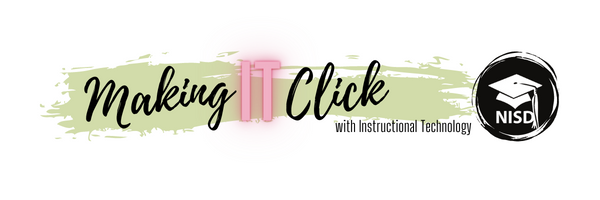Students long for a platform to make their voices heard. So much so that 94% of all teens ages 13-17 are on social media. While various negative factors have influenced an adult’s perception of the value of social media, “new research is shedding light on the good things that can happen when kids connect, share, and learn online” according to this article from Common Sense Media which identifies the following benefits of students being social media-savvy: 1. It strengthens friendships, 2. It offers a sense of belonging, 3. It provides genuine support, 4. It helps them express themselves, 5. It lets them do good.
Jenny Kinzbach and Frank Ceresoli, two CTE teachers at Byron Nelson High School, are honing into these benefits by using collaborative discussion boards via Google Classroom within their Health Science Theory classes. Opinion-based, open ended questions are posed one week before the material is covered in class in order to prompt thinking; additionally, it is used to gauge prior knowledge as well as perception of topics related to the field. Based on the responses, the teachers then direct their instruction towards the needs and interests that the discussion brought about.
According to the Health Science TEKS, TEK b4 states “To pursue a career in the health science industry, students should recognize, learn to reason, think critically, make decisions, solve problems, and communicate effectively. Students should recognize that quality health care depends on the ability to work well with others.”
While it’s important for students to have a platform to express their content-based opinions, it is equally important that students sharpen the life skills that are associated with the task. Below are examples in which students respond in agreement or disagreement to their peers, as well as ask each other probing questions and foreseeing and understanding opposing viewpoints on the same topic.
Teacher-posed Question: "To combat doctor shortages, should their medical school tuition be free? (Paid for by taxpayer dollars). Explain."
Student initial response with peer agreement:
Student initial response with peer disagreement:
Student initial response with peer-posed probing questions:
Student initial response composed of supporting arguments for opposing viewpoints:
Student benefits of using this collaborative discussion board:
- Since nine classes collaborate on the same discussion board, this exponentially expands a student’s audience and power of their voice through expanding the walls of the physical classroom.
- A majority of the questions are opinion-based requiring students to agree or disagree and provide an explanation that defends their answer. This provides a platform where all opinions are welcomed and heard.
- Student Mickayla states, “I really like the discussion boards because it helps me see other peoples opinions on the topic. I also like that I can see people’s opinion of my own opinion which can further my education on parts of the topic that I didn't know or think about before.”
- Students are required to read and respond to at least two other student’s opinions; doing so requires students to explore multiple viewpoints whether that hearing evidence that hadn’t be considered to support the same opinion or bringing an opposing perspective to frame the concept differently.
- These structured discussions provide a safe environment for disagreements to occur. Reading other viewpoints facilitates opportunities to promote tolerance and facilitate the difficult task of crafting a respectful response.
- Providing a platform for “Academic Social Media” encourages students to pursue learning out of interest and curiosity.
Since this platform is used as a pre-assessment of sorts, these teachers plan to expand the purpose of this assignment to also include a post-assessment/reflection in which students respond to their own original post to either agree or disagree with their original opinion and provide text evidence from learned class material. Quite an interesting and engaging spin on a self-reflective summative/closing writing prompt!
This meets International Society for Technology in Education (ISTE)’s standard of an Empowered Learner in which “students build networks and customize their learning environments in ways that support the learning process” (1B) and “students use technology to seek feedback that informs and improves their practice…” (1C). Furthermore, these students are also meeting the expectations of a Digital Citizen through which “students engage in positive, safe, legal, and ethical behavior when using technology, including social interactions online or when using networked devices” (2B).


No comments:
Post a Comment
Note: Only a member of this blog may post a comment.